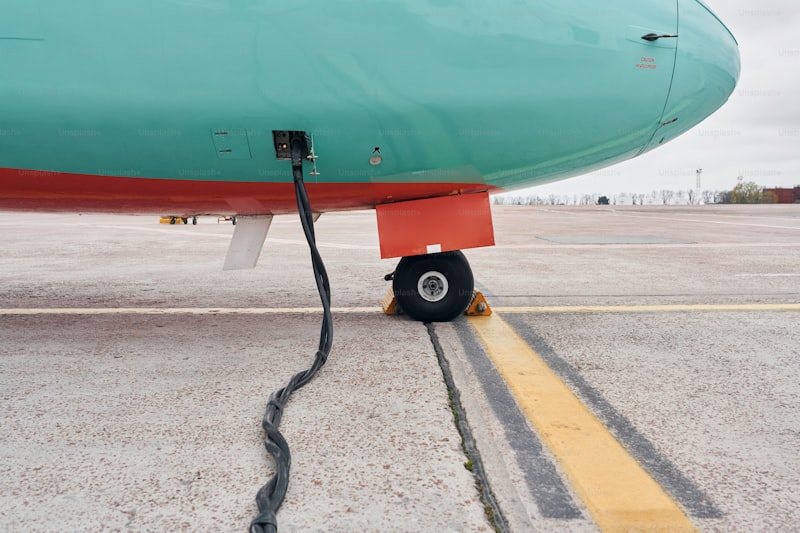When you suspect a brake line leak, the first step is to identify the source. Inspect the brake lines visually for any signs of wetness, corrosion, or damage. Leaks often occur at the joints, fittings, or where the lines rub against other components. Look for puddles or wet spots under the car, which could indicate brake fluid leaking.
Once you’ve located the leak, the next step is to assess the severity. Minor leaks may appear as damp spots, while more severe leaks can result in a noticeable loss of brake fluid. It’s essential to act quickly regardless of the leak’s size to prevent further damage and ensure your brakes remain functional.
Repairing a brake line leak typically involves replacing the damaged section of the brake line. Depending on the extent of the damage, you may need to replace a small segment or the entire line. It’s advisable to use high-quality replacement parts and ensure they are compatible with your vehicle’s brake system.
Before beginning any repairs, ensure the car is safely supported on jack stands and the wheels are securely chocked to prevent movement. Use appropriate tools and follow manufacturer guidelines or consult a professional mechanic if you’re unsure about the repair process.
After replacing the damaged brake line, thoroughly bleed the brake system to remove any air bubbles and ensure proper brake fluid pressure. Bleeding brakes involves opening the bleed valves in a specific sequence and pumping the brake pedal to expel air from the system.
Regularly inspecting your car’s brake system and addressing any issues promptly is key to maintaining vehicle safety and performance. Remember, brakes are essential for your safety on the road, so never hesitate to seek professional help if you’re uncertain about repairing brake line leaks yourself.
DIY Guide: Fixing Car Brake Line Leaks Made Easy
Dealing with a brake line leak in your car can be daunting, but with the right approach, you can tackle it yourself and save money on costly repairs. Brake line leaks are often caused by corrosion or damage to the lines that carry brake fluid throughout your vehicle’s braking system. It’s crucial to address these leaks promptly to maintain safe braking performance.
Firstly, you’ll need to gather the necessary tools and materials. This includes a brake line tubing cutter, flare nut wrenches, brake fluid, tubing bender, and replacement brake lines if needed. Safety goggles and gloves are essential to protect yourself from brake fluid splashes, which can be harmful to your skin and eyes.
Start by locating the leak. Inspect the brake lines under your car for signs of corrosion, wet spots, or puddles of brake fluid. Once you’ve identified the leaking section, use your tubing cutter to remove the damaged part of the brake line. Be careful not to damage nearby lines or components during this process.
Next, measure and cut the replacement brake line to fit the gap left by the removed section. Use a tubing bender to shape the new line as needed to match the curvature of the original brake line. Ensure that all connections are clean and free of debris before proceeding to install the new line.
Using flare nut wrenches, carefully tighten the fittings on both ends of the new brake line. Double-check each connection to ensure there are no leaks and that everything is securely fastened. Once satisfied, refill the brake fluid reservoir and bleed the brakes according to your car’s manufacturer guidelines to remove any air from the system.
By following these steps methodically, you can successfully fix a brake line leak in your car and restore safe braking performance without the need for professional help. Remember, safety first and take your time to ensure each step is done correctly.
Step-by-Step: Identifying and Repairing Brake Line Leaks
Detecting brake line leaks early can prevent serious safety hazards. Look for signs such as a soft or spongy brake pedal, brake fluid puddles under the vehicle, or a dashboard warning light indicating low brake fluid levels. Inspect the brake lines visually for signs of corrosion, rust, or wet spots along the lines. These visual cues often indicate the presence of a leak.
To pinpoint the exact location of a brake line leak, carefully inspect the entire length of the brake lines, focusing on areas where corrosion or damage is visible. Check where the lines connect to the brake calipers, wheel cylinders, or the master cylinder. Sometimes, leaks may occur at the fittings or along the length of the brake line due to wear and tear or external damage.
-
Prepare the Vehicle: Park the vehicle on a flat surface and engage the parking brake for safety.
-
Identify the Damaged Section: Once the leak is located, identify the section of the brake line that needs repair.
-
Replace the Brake Line: Depending on the extent of the damage, you may need to replace the entire brake line or only the damaged section. Use quality replacement parts designed for your vehicle’s make and model.
-
Bleed the Brake System: After replacing the brake line, bleed the brake system to remove any air bubbles and ensure proper brake fluid pressure.
-
Test the Brakes: Conduct a thorough test of the brake system to ensure that the repairs were successful and that the brakes are functioning correctly.
Identifying and repairing brake line leaks promptly is crucial for maintaining vehicle safety and optimal braking performance. By recognizing the signs of leaks early, locating the exact source of the problem, and performing the necessary repairs with care, drivers can ensure their brakes operate effectively and safely on the road. Always consult a professional mechanic if you are unsure about performing brake repairs yourself or if the damage is extensive.
Expert Tips: Preventing and Repairing Brake Fluid Leaks
Firstly, prevention is key. Regularly inspect your vehicle’s brake system for any signs of leaks. Look for wet spots or puddles under the car, especially near the wheels and under the brake master cylinder. Check the brake lines, calipers, and wheel cylinders for corrosion, cracks, or worn-out seals. Catching these issues early can prevent costly repairs later on.

Secondly, maintenance plays a crucial role. Ensure that your brake fluid is changed according to the manufacturer’s recommendations. Brake fluid absorbs moisture over time, which can lead to corrosion and seal deterioration. Flushing and replacing the brake fluid at recommended intervals helps maintain the integrity of the brake system components.
Thirdly, proper installation is essential. When replacing brake components or conducting maintenance, ensure that all parts are installed correctly and that seals and connections are secure. Improper installation can lead to leaks and compromise the effectiveness of your braking system.
Fourthly, use high-quality products. Opt for reputable brake fluids and components that meet or exceed OEM specifications. Quality products are less likely to degrade or fail prematurely, reducing the risk of leaks and ensuring optimal brake performance.
Lastly, prompt action is crucial if you suspect a leak. If you notice a decrease in brake fluid levels or any signs of a leak, such as a spongy brake pedal or illuminated warning light, address it immediately. Ignoring brake fluid leaks can lead to brake failure and unsafe driving conditions.
By following these expert tips, you can effectively prevent and address brake fluid leaks, ensuring your vehicle’s braking system remains reliable and safe. Regular inspection, proper maintenance, quality products, and swift action are key to keeping your brakes in top condition.
Common Causes of Brake Line Leaks and How to Spot Them
Brake line leaks can be a serious safety concern for any vehicle owner. Understanding the common causes and knowing how to identify them early can prevent accidents and costly repairs down the road. Here’s a closer look at what causes brake line leaks and signs to watch out for.
One of the primary culprits behind brake line leaks is corrosion. Over time, brake lines can rust, especially in areas where road salt is used during winter. Rust weakens the metal, causing it to develop tiny holes through which brake fluid can escape. Checking brake lines regularly for signs of rust or corrosion can help catch this issue early.
Another frequent cause is physical damage. Brake lines are often exposed underneath the vehicle, making them susceptible to damage from debris on the road or accidental impact. A puncture or a sharp bend can compromise the integrity of the brake line, leading to leaks. Inspecting the underside of the vehicle after driving on rough terrain or through construction zones is advisable.

Improper installation or maintenance can also contribute to brake line leaks. If the brake lines are not installed correctly or if fittings become loose over time, it can result in fluid seepage. Ensuring that brake lines are installed by qualified technicians and conducting regular maintenance checks can mitigate this risk.
Spotting brake line leaks early requires vigilance. Look for puddles or stains of brake fluid under the vehicle, particularly near the wheels. A soft or spongy brake pedal could indicate a leak, as the fluid fails to create enough pressure to engage the brakes effectively. Any change in braking performance should prompt a thorough inspection by a professional mechanic.
By understanding these common causes and being proactive in maintenance, vehicle owners can enhance safety and prolong the lifespan of their braking system. Prevention and early detection are key to avoiding the inconvenience and potential danger posed by brake line leaks.
Essential Tools for Fixing Brake Line Leaks at Home
One of the primary tools you’ll need is a flare nut wrench set. These specialized wrenches are designed to fit perfectly around brake line fittings without causing damage. They come in various sizes to accommodate different brake line fittings, ensuring a snug and secure fit during disassembly and reassembly.
Additionally, a tube cutter is indispensable for cleanly cutting through brake lines. This tool provides precise cuts, preventing jagged edges that could compromise the integrity of the brake system. It allows for smooth removal of damaged sections and accurate preparation of new brake lines for installation.
Another essential tool is a double flaring tool kit. This tool is crucial for creating double flares on brake lines, which are necessary to ensure leak-free connections. It allows you to precisely form the flares that seat perfectly into fittings, providing a tight seal that withstands hydraulic pressure.
To properly tighten fittings without over-torquing them, a torque wrench is essential. This tool ensures that fittings are tightened to manufacturer specifications, preventing under-tightening that could lead to leaks or over-tightening that could damage fittings or brake lines.
In addition to these specialized tools, it’s important to have safety equipment such as safety goggles and gloves to protect yourself from brake fluid and debris during the repair process. These items ensure your safety and comfort while working on your vehicle’s brake system.
By having these essential tools at your disposal and taking a methodical approach to repairing brake line leaks, you can effectively address issues at home while maintaining the safety and reliability of your vehicle’s braking system.
Safety First: Handling Brake Fluid Leaks with Confidence
Dealing with brake fluid leaks requires careful attention and a proactive approach to ensure safety on the road. Brake fluid is crucial for the proper functioning of your vehicle’s braking system, transmitting force from the brake pedal to the brakes themselves. When you notice a leak, it’s important not to panic but to take immediate action to prevent further issues.
Firstly, identify the leak by checking under the car for puddles or wet spots near the wheels. Brake fluid is usually clear or slightly yellowish and has a slippery texture. If you suspect a leak, refrain from driving the vehicle until the issue is resolved. Continuing to drive with a brake fluid leak can compromise your ability to stop safely.
Next, assess the severity of the leak. Minor leaks may be manageable temporarily, but it’s essential to have a professional mechanic inspect and repair the issue promptly. Remember, even a small leak can escalate into a more significant problem if left unattended.
To handle brake fluid leaks with confidence, equip yourself with the necessary tools and materials. Keep a bottle of brake fluid suitable for your vehicle on hand, along with a flashlight, gloves, and rags for cleanup. Working on your brakes requires a methodical approach, so ensure you have adequate time and space to complete the task safely.
When repairing brake fluid leaks, follow the manufacturer’s guidelines and recommendations. Use proper techniques to avoid introducing air into the brake lines, which can lead to brake failure. If you’re unsure or uncomfortable with DIY repairs, it’s best to consult a qualified mechanic. Your safety and the safety of others on the road depend on a properly functioning braking system.
Handling brake fluid leaks requires vigilance and a proactive attitude towards vehicle maintenance. By staying informed and taking immediate action, you can ensure your brakes operate reliably, contributing to safer driving experiences for you and others.
Frequently Asked Questions
What are the steps to diagnose a brake line leak
Learn how to diagnose a brake line leak efficiently with these steps: 1. Inspect for fluid puddles under the car. 2. Check brake fluid levels and look for sudden drops. 3. Examine each brake line visually for signs of corrosion or wet spots. 4. Use a brake line pressure tester to pinpoint the leak location. 5. Repair or replace damaged sections as needed to ensure safe braking.
Can I fix a brake line leak myself, or do I need a professional
Learn whether you can fix a brake line leak yourself or if professional assistance is necessary. Get clear guidance on the steps involved in DIY repairs and when it’s crucial to seek professional help for safety and reliability.
What are the common signs of brake line leaks in a car
Learn about the common signs of brake line leaks in a car, including soft brake pedal, brake fluid puddles under the vehicle, and illuminated brake warning light on the dashboard.
What tools and materials are needed to repair a brake line leak
Discover the essential tools and materials required to effectively repair a brake line leak. This concise FAQ provides a clear list, ensuring you have everything needed for a successful repair.
How dangerous is driving with a brake line leak
Learn about the dangers of driving with a brake line leak, including potential loss of braking power, increased stopping distances, and heightened risk of accidents due to compromised vehicle control. Discover why immediate inspection and repair are crucial to ensure road safety.


